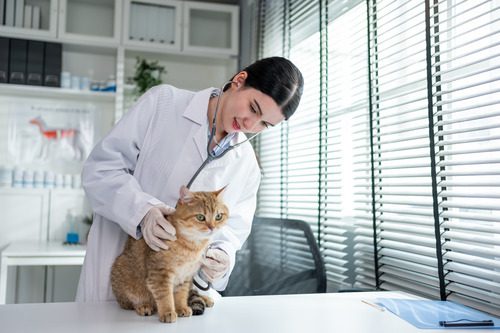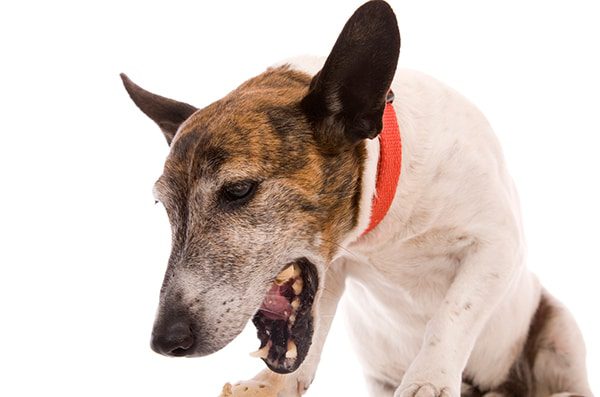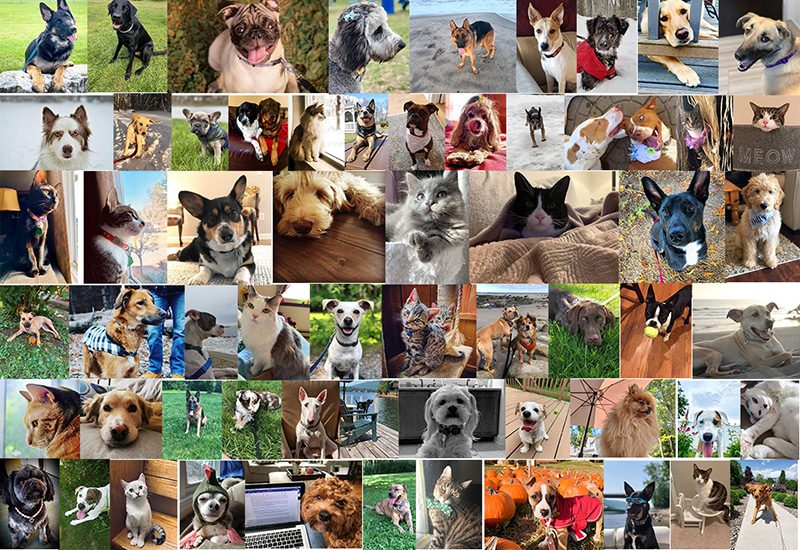Can Cats Get Parvo?
Parvo is a word that strikes fear into the hearts of many dog owners, but what about cats? Can cats get parvo? The answer is more complex than a simple yes or no. While parvovirus is commonly associated with dogs, there is a feline-specific version of the virus that poses serious risks for cats. This blog takes an in-depth look at how parvovirus affects cats, the differences between feline and canine parvo, how it spreads, symptoms to look out for, and how it can be prevented. If you have questions about your cat’s health or need guidance, Cornerstone Veterinary Hospital of Clifton Park is happy to help. Call us at (518) 383-6254 or make an appointment today.

What Is Parvo and How Does It Affect Cats?
Parvovirus is a highly contagious and often severe viral illness. While most people associate it with dogs, there is a feline version called feline panleukopenia virus (FPV), sometimes referred to as feline distemper. So, when asking “Can cats get parvo?” the answer is yes, but they get a different strain. FPV is a parvovirus that exclusively affects cats and is closely related to canine parvovirus (CPV).
This virus targets rapidly dividing cells, such as those in the bone marrow, intestines, and developing fetuses. It weakens a cat’s immune system, damages the gastrointestinal tract, and can be fatal if not addressed promptly. Young kittens, unvaccinated cats, and those in shelters or overcrowded environments are especially vulnerable. The virus spreads quickly through direct contact or contaminated surfaces, including bedding, litter boxes, and human hands.
Canine Parvovirus vs. Feline Panleukopenia
While both viruses fall under the parvovirus family, they behave differently and affect separate species. However, they share enough similarities that it’s worth comparing them to understand the risks.
Differences in Strains
Canine parvovirus (CPV) and feline panleukopenia virus (FPV) are closely related but species-specific. Dogs cannot contract FPV, and cats typically cannot contract CPV. That said, there have been isolated cases where feline cells were affected by newer strains of CPV, though this is rare and still under investigation.
Symptoms in Cats vs. Dogs
The clinical signs of FPV in cats are similar to those seen in dogs with parvo: vomiting, diarrhea, lethargy, and loss of appetite. However, in cats, additional symptoms like sudden fever, nasal discharge, and a severely compromised immune response are also common.
Transmission Routes
FPV can spread through direct contact with an infected cat, but it also lives on surfaces for extended periods, even up to a year in some cases. It can be picked up through grooming, shared litter boxes, or even contaminated food and water bowls. CPV spreads in much the same way among dogs.
Symptoms of Feline Parvo (Panleukopenia)
Early detection makes a significant difference in managing and potentially saving a cat affected by panleukopenia. Since the virus progresses rapidly, recognizing the warning signs can help cat owners seek veterinary care right away.
Common Signs to Watch For
- Sudden onset of vomiting or severe diarrhea
- Loss of appetite and extreme lethargy
- Dehydration, often due to fluid loss
- High fever or sudden drop in temperature
- Neurological signs in kittens (such as tremors or uncoordinated movement)
These symptoms tend to appear quickly and worsen over a short period of time. Left untreated, FPV can be fatal, particularly in kittens under 6 months of age. If you notice any of these signs, call Cornerstone Veterinary Hospital of Clifton Park at (518) 383-6254.
How Do Cats Get Parvo?
When discussing if cats can get parvo, it’s important to understand the different ways feline panleukopenia virus can spread. It is one of the most contagious viruses among cats and can infect both indoor and outdoor felines.
Direct and Indirect Contact
The virus spreads through contact with infected bodily fluids, feces, or contaminated environments. A cat doesn’t have to meet an infected animal face-to-face to contract FPV, virus particles can be brought into the home on shoes, clothing, or other surfaces.
Transmission in Shelters or Multi-Cat Homes
Shared living spaces significantly increase the risk. Shelters, catteries, and homes with multiple cats must take additional precautions to control the spread. Quarantine protocols and routine disinfection practices are essential.
Diagnosing Parvo in Cats
If your cat shows symptoms, your veterinarian will perform diagnostic tests to confirm the presence of FPV. These tests typically include bloodwork and stool analysis.
What to Expect During Diagnosis
Veterinarians often begin with a complete physical exam, followed by blood tests to detect low white blood cell counts, which are typical of panleukopenia. Fecal tests may also be used to check for the virus or rule out other causes of similar symptoms. Prompt diagnosis is critical for determining the appropriate next steps in care.
How Are Cats with Parvo Treated?
There is no direct cure for feline panleukopenia, but supportive care can help a cat survive the infection. Early intervention offers the best chance of recovery.
Hospitalization and Supportive Care
Most cats with FPV require hospitalization for intravenous fluids, anti-nausea medication, and antibiotics to prevent secondary infections. Nutritional support and temperature regulation are also essential parts of treatment.
Recovery Outlook
The recovery rate depends on the cat’s age, immune status, and how quickly treatment begins. Kittens face the greatest risk, but adult cats can recover with timely care. Even after recovery, a cat may continue to shed the virus for several weeks, so isolation and hygiene are still important during this period.
How to Prevent Parvo in Cats
Vaccination remains the most effective way to protect cats from panleukopenia. Preventive care should begin in kittenhood and continue through adulthood with regular boosters.
The Role of the FPV Vaccine
The feline distemper vaccine includes protection against panleukopenia and is considered a core vaccine for all cats. Kittens typically receive a series of vaccines starting at six to eight weeks of age, followed by boosters every three to four weeks until 16-20 weeks of age.
Protecting Indoor Cats
Even indoor cats need this vaccine. Because FPV can travel on shoes, clothing, or visitors, the risk still exists for cats who don’t venture outside. Maintaining up-to-date vaccinations gives them strong protection against this virus.
Cleaning and Disinfection
If there’s been an exposure to parvo in your household, thorough cleaning is necessary. FPV is resistant to many common disinfectants, so products containing bleach or labeled as effective against parvovirus are recommended. Wash bedding, toys, and food bowls, and sanitize all high-traffic areas.
When to Contact Your Veterinarian
If you’re asking yourself, “Can cats get parvo?” because your cat is showing signs of illness or has been exposed to an infected animal, contacting your veterinarian is the next step. Acting quickly can help preserve your cat’s health and prevent further spread. At Cornerstone Veterinary Hospital of Clifton Park, we provide timely, compassionate care for cats experiencing urgent health concerns. To schedule an appointment, call (518) 383-6254 today.
Why Parvo Awareness Matters for Cat Owners
Parvovirus may be more commonly linked to dogs, but the threat it poses to cats is just as serious. Asking “Can cats get parvo?” shows you’re being proactive about your cat’s health and that awareness can make a difference. From understanding how FPV spreads to recognizing early warning signs and prioritizing vaccinations, every step helps reduce the risk. Whether you’re a first-time cat owner or managing a multi-cat household, staying informed about parvovirus could be life-saving. Have questions about vaccinations or need to bring your cat in for a checkup? Contact Cornerstone Veterinary Hospital of Clifton Park at (518) 383-6254 or request an appointment online today.
Recent Posts
Help! My Dog Keeps Scratching and I Don’t Know What to Do!
Help! My Dog Keeps Scratching and I Don’t Know What to Do! While it is perfectly normal…
Reasons Why Your Dog is Throwing Up in Clifton Park, NY
Reasons Why Your Dog is Throwing Up in Clifton Park, NY Suddenly, you hear a familiar gurgling…
Congratulations to Our Photo Contest Finalists
Congratulations to Our Photo Contest Finalists! Thank you to all of our amazing clients – and your…
About Us
Originally opened as Animal Care Hospital by Dr. Mark Johnston in 1989, the hospital became Cornerstone Veterinary Hospital in 2015 when it was purchased by Drs. Alan and Lisa Knott. The name 'Cornerstone' holds a special place in their hearts, representing not only their Christian faith but also their commitment to being the cornerstone of the community in which they practice. As a family-owned and operated practice, every pet is treated as part of the family, ensuring they receive the highest standard of care. The team at Cornerstone Veterinary Hospital is dedicated to building lasting relationships with clients and their beloved pets, striving to be the cornerstone of the community in which they practice.



